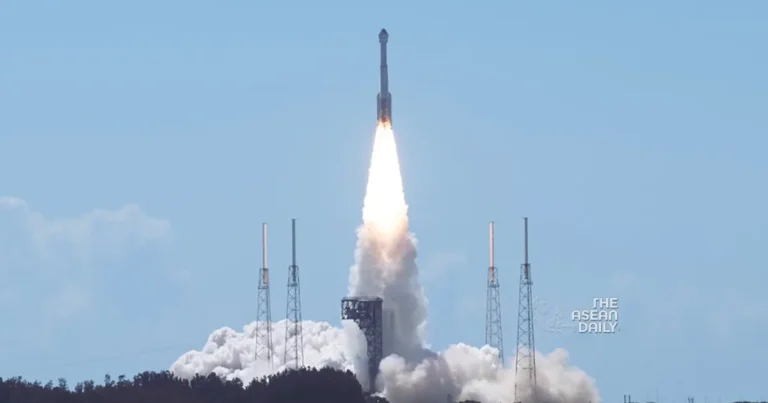6-6-2024 (TEXAS) In a momentous stride towards bolstering its position in the burgeoning commercial space industry, Boeing’s much-anticipated Starliner astronaut capsule embarked on its maiden crewed voyage on June 5, launching from the hallowed grounds of Cape Canaveral Space Force Station in Florida. Strapped atop a powerful Atlas V rocket, furnished and flown by the esteemed Boeing-Lockheed Martin joint venture United Launch Alliance (ULA), the gumdrop-shaped capsule carried two veteran NASA astronauts on a historic mission to the International Space Station (ISS).
The thunderous roar of the Atlas V’s engines reverberated across the Atlantic Coast as plumes of exhaust and coolant-water vapor painted the sky, propelling the Starliner into the heavens on its long-awaited debut. After a flawless separation from the rocket’s upper stage, the capsule ignited its onboard thrusters, embarking on a 24-hour pursuit to rendezvous with the orbiting laboratory.
Aboard the seven-seat Starliner are two seasoned space explorers: Barry “Butch” Wilmore, 61, a retired U.S. Navy captain and fighter pilot, and Sunita “Suni” Williams, 58, a former Navy helicopter test pilot with a wealth of experience spanning over 30 different aircraft. Collectively, the duo has amassed an impressive 500 days in space across four previous ISS missions, lending invaluable expertise to this pioneering endeavor.
Wilmore, designated as the mission’s commander, and Williams, occupying the pilot’s seat, are slated to spend approximately a week aboard the ISS before embarking on their return journey to Earth. Their voyage marks a pivotal milestone in Boeing’s ambitions to establish itself as a formidable contender in the burgeoning commercial space industry, competing head-to-head with Elon Musk’s SpaceX and its Crew Dragon capsule, which has become a reliable transportation service for NASA astronauts to and from the ISS.
For Boeing, the success of the Starliner program carries immense significance, as the aerospace giant seeks to regain its footing in the wake of the turbulent 737 Max crisis that has rocked its commercial aviation operations. With the Starliner venture already running several years behind schedule and over $1.5 billion over budget, a triumphant outcome would represent a much-needed win for the company’s space ambitions.
If all proceeds according to plan, the Starliner capsule will dock with the ISS on Thursday, where Wilmore and Williams will join the station’s current seven-resident crew. Their stay on the orbiting outpost will not only serve as a crucial test of the capsule’s capabilities but also pave the way for future crewed missions under NASA’s Artemis program, which aims to establish a sustainable human presence on the Moon and beyond.




